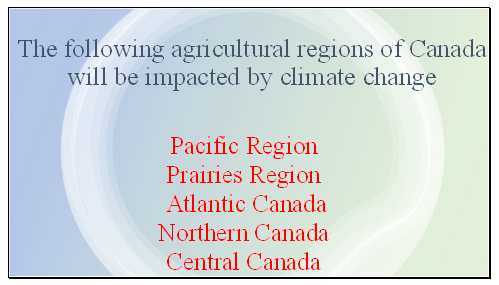Highlights
- Agricultural Climate Solutions (ACS) is planning on developing regional collaboration hubs called Living Labs. Every province in Canada is focused on including at least one collaboration hub.
- The On-Farm Climate Action Fund is a C$ 200 million, three-year fund program that will help farmers to tackle climate change by supporting them in the adoption of beneficial management practices (BMPs).
- The government of Canada is on a goal to achieve net-zero emissions by 2050 and lower greenhouse gas emissions by 30 per cent by 2030 from the 2005 level.
Agriculture highly relies on climate and weather for production, but warming temperatures, longer growing seasons, changing precipitation patterns, and extreme weather events are impacting the agricultural sector of Canada. So, the government of Canada has introduced Agricultural Climate Solutions (ACS) which will be implementing and developing farming practices to fight climate change. Today, in this article, we will learn about ACS.
ACS is known as a C$ 185 million, 10-year program that will be helping in tackling climate change through executing farming practices such as shelterbelts or cover crops. It is a program that comes under the Natural Climate Solutions Fund of over C$ 4 billion.
To develop projects which are investing in natural climate solutions such as Environment and Climate Change Canada (ECCC)’s Nature Smart Climate Solutions Fund and Natural Resources Canada (NRCan)’s Growing Canada’s Forests program, Agriculture and Agri-Food Canada (AAFC) is developing a partnership with ECCC and NRCan. These solutions will play a major role in achieving emission reduction targets in Canada.
Also read: What is Canada's Healthy Environment & Healthy Economy climate plan?
Climate change will impact the following agricultural regions in Canada:
- Pacific Region (British Columbia)
- Prairies Region (Alberta, Saskatchewan, Manitoba)
- Atlantic Canada (Prince Edward Island, New Brunswick, Newfoundland, Labrador, and Nova Scotia)
- Northern Canada (Nunavut, Northwest Territories, and Yukon)
- Central Canada (Ontario, Quebec)
What are Living Labs?
ACS is planning on developing regional collaboration hubs called Living Labs. Every province in Canada is focused on including at least one collaboration hub. At each hub, farmers and farm groups will be placed at the center of decision-making and on-farm activities.
Living Labs focuses on providing knowledge to other farmers so that they can implement solutions according to their regions and encourage resiliency and environmental sustainability in the agricultural sector.
Also read: How does Canada’s forestry industry tackle climate change?
To reduce the environmental footprint and enhance climate resiliency in Canada, farmers, scientists, and other sector partners will be working together in monitoring beneficial management practices on working farms through these labs. The work by them will help in conserving biodiversity, improving water and soil quality, and strengthening farmers’ bottom lines.
What is the On-Farm Climate Action Fund?
It is a C$ 200 million, three-year fund program that will help farmers to tackle climate change by supporting them in the adoption of beneficial management practices (BMPs) which absorb carbon and mitigate greenhouse gases, especially in cover cropping, and nitrogen management.
Also read: What are the impacts of climate change on the Arctic environment?
How can farmers help meet Canada’s emissions targets?
To reduce greenhouse gas emissions and improve Canadians’ quality of life, the agriculture sector supports the goals of a strengthened climate plan of Canada through the help of ACS. The government of Canada is on a goal to achieve net-zero emissions by 2050 and lower greenhouse gas emissions by 30 per cent by 2030 from the 2005 level.
What can farmers do to meet emissions targets?
- The millions of acres of farmland in Canada can help in sequestering carbon and mitigating greenhouse gases from the atmosphere.
- By using cover crops and intercropping ways, farmers in Canada can help in improving soil quality, absorbing more carbon from the atmosphere, and reducing negative environmental effects.
- Farming practices can also help in safeguarding clean water for communities.
- Biodiversity protection on farms can help in healthy fields with lower pest problems.
- Environmentally sustainable farms can help in tackling climate change and play a role in the well-being of Canadians by providing clean air, water and healthy food.
Also read: What is Canadian Environmental Assessment Act (CEAA) 2012?

Image credit: © 2022 Kalkine Media®
Bottom line
Increasing wildfire risk and extreme weather events, including floods and droughts will adversely impact farmers in Canada. The government is partnering with farmers to implement and develop best practices that will help in tackling climate change, protect lands and waters and provide important economic benefits to farmers.



